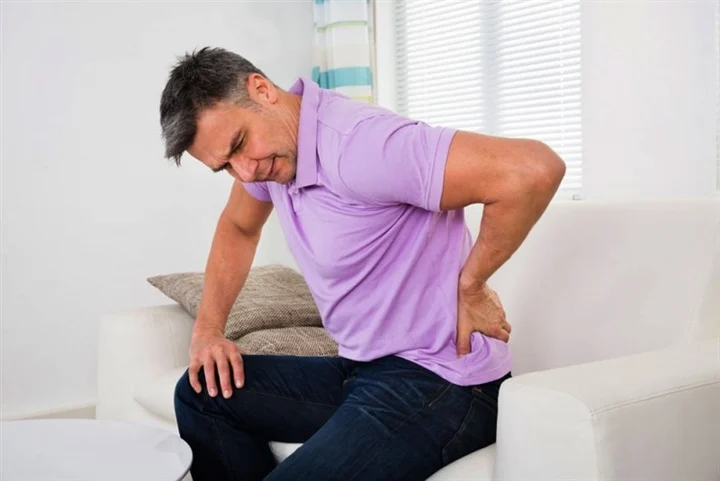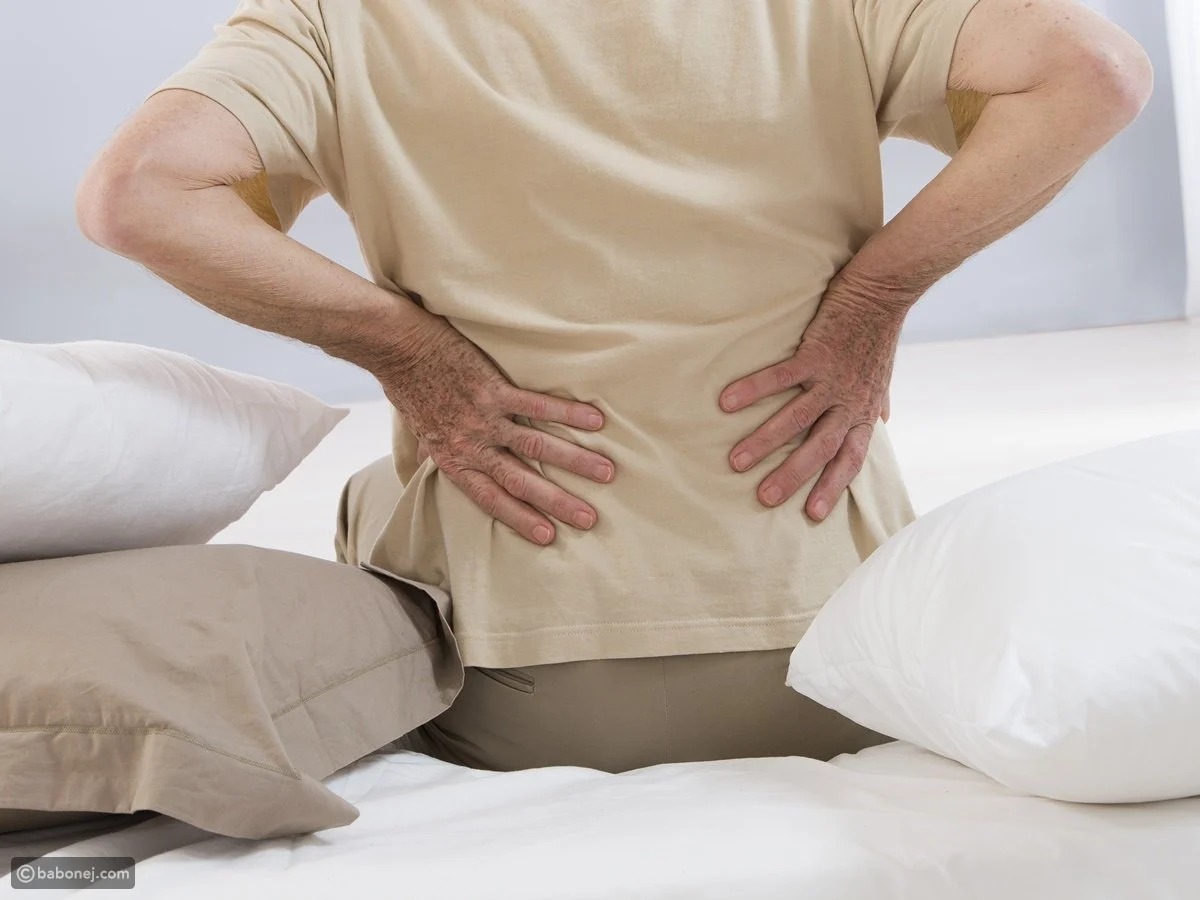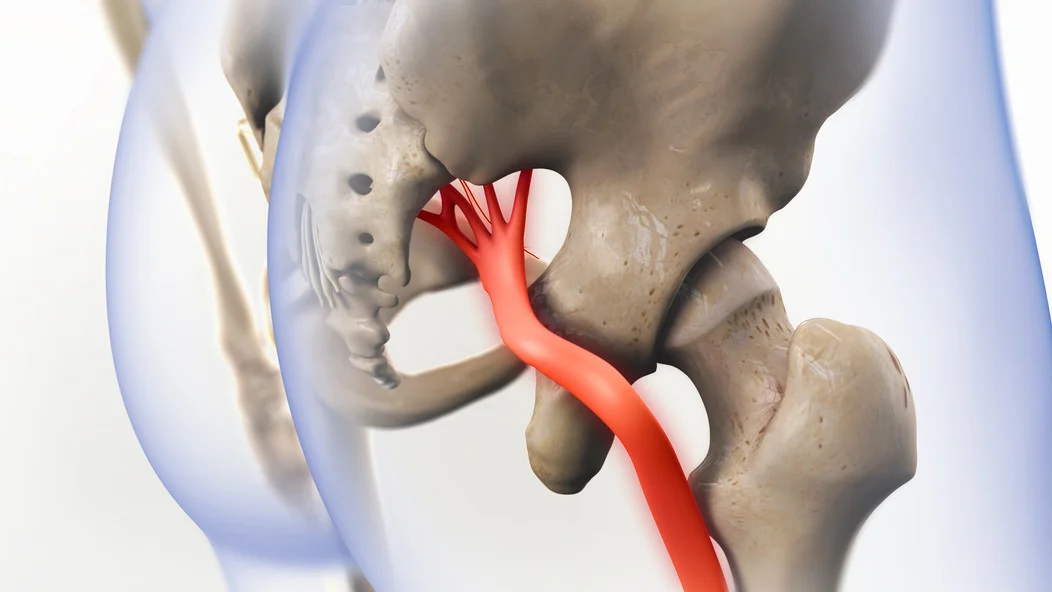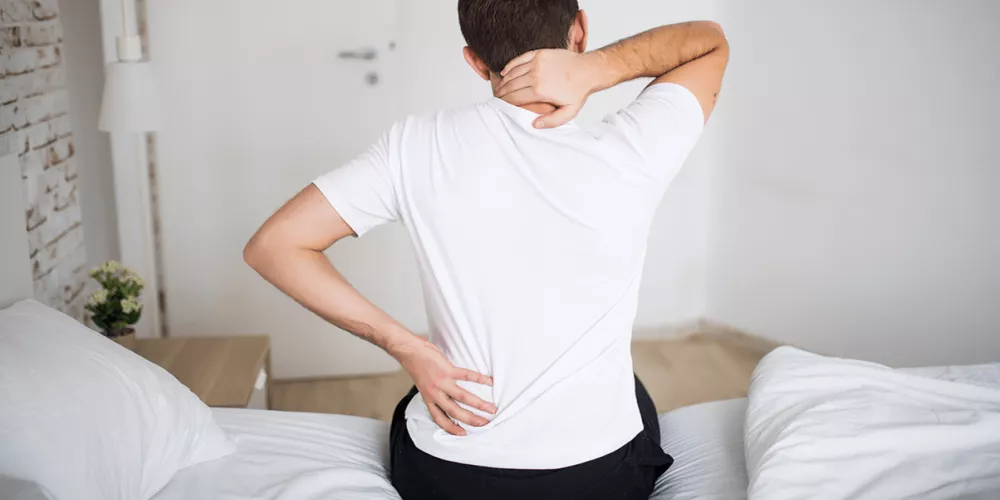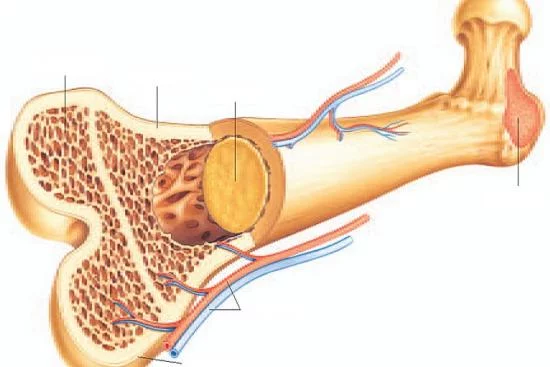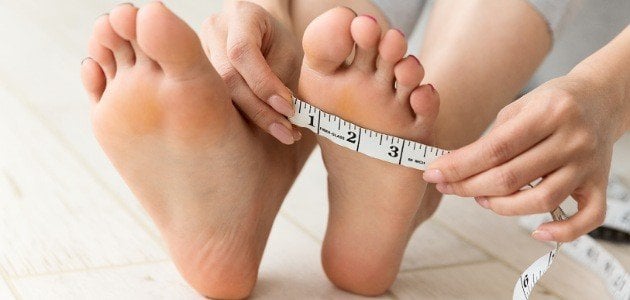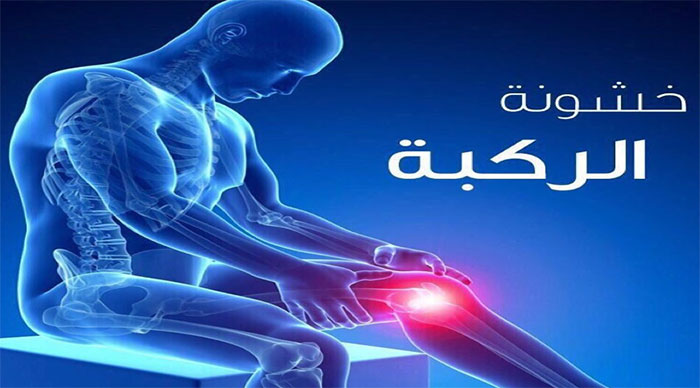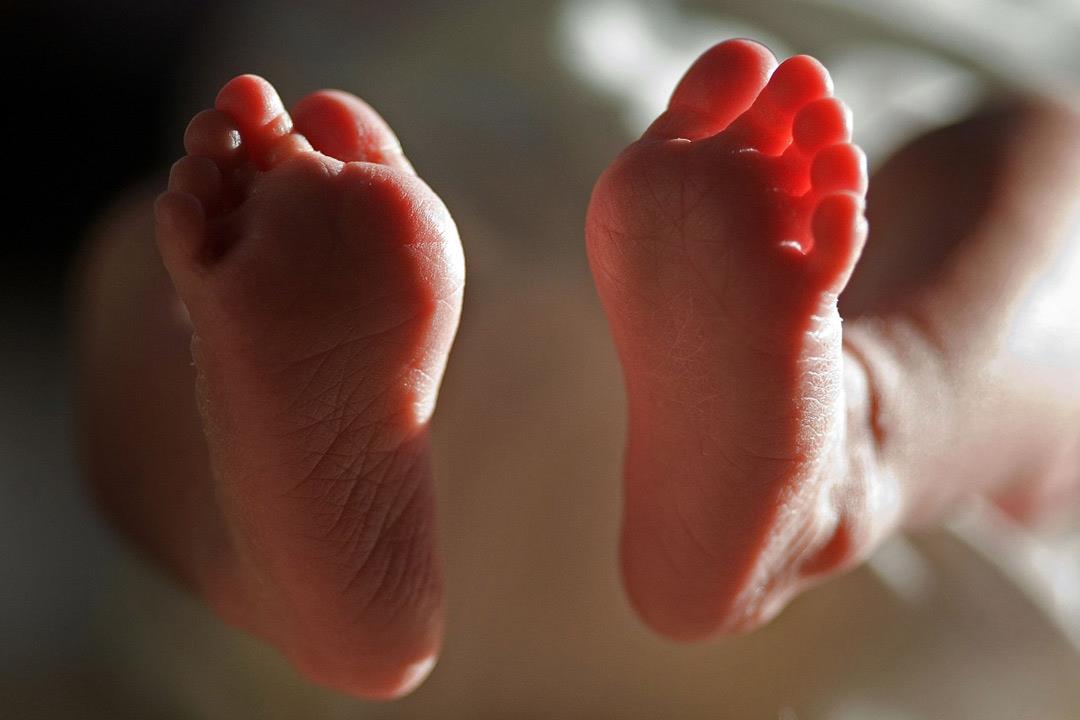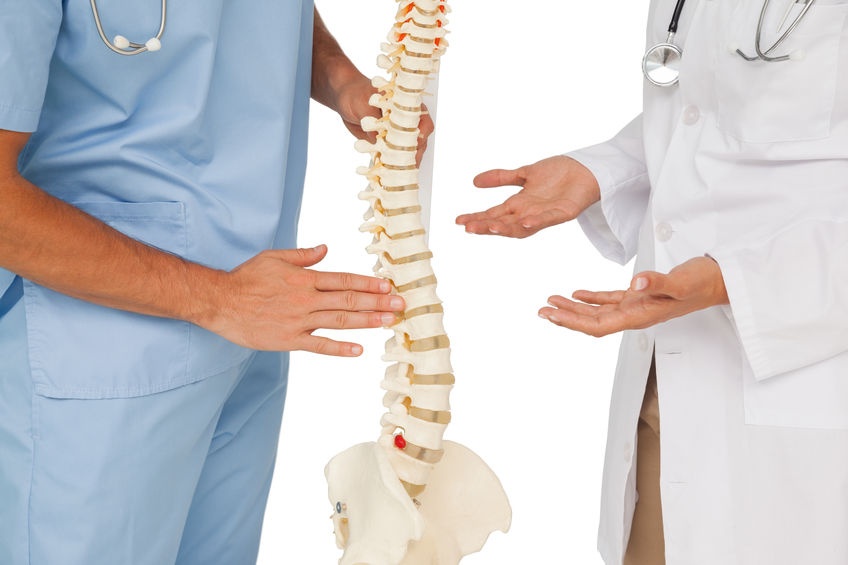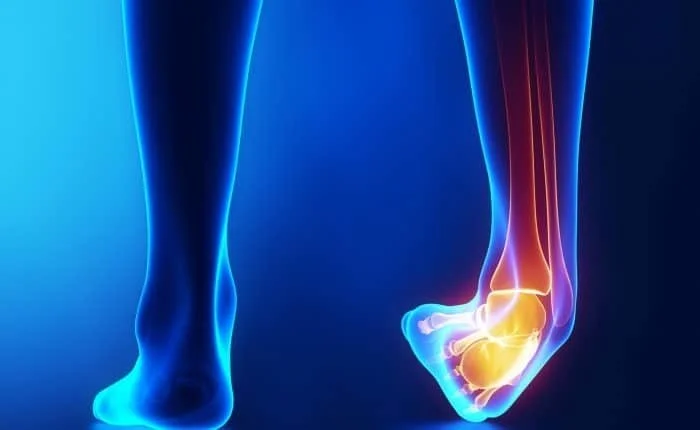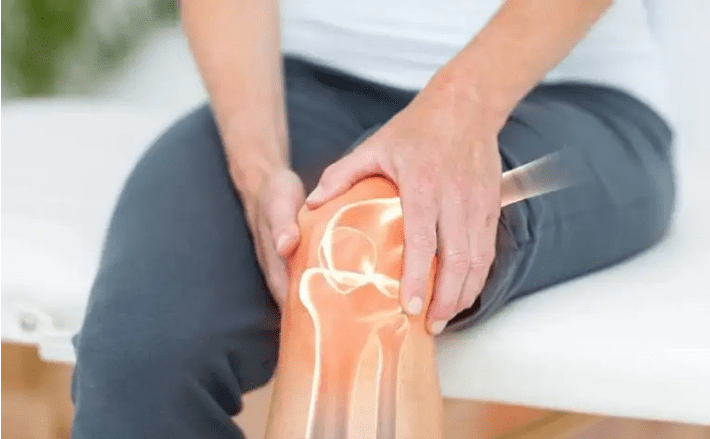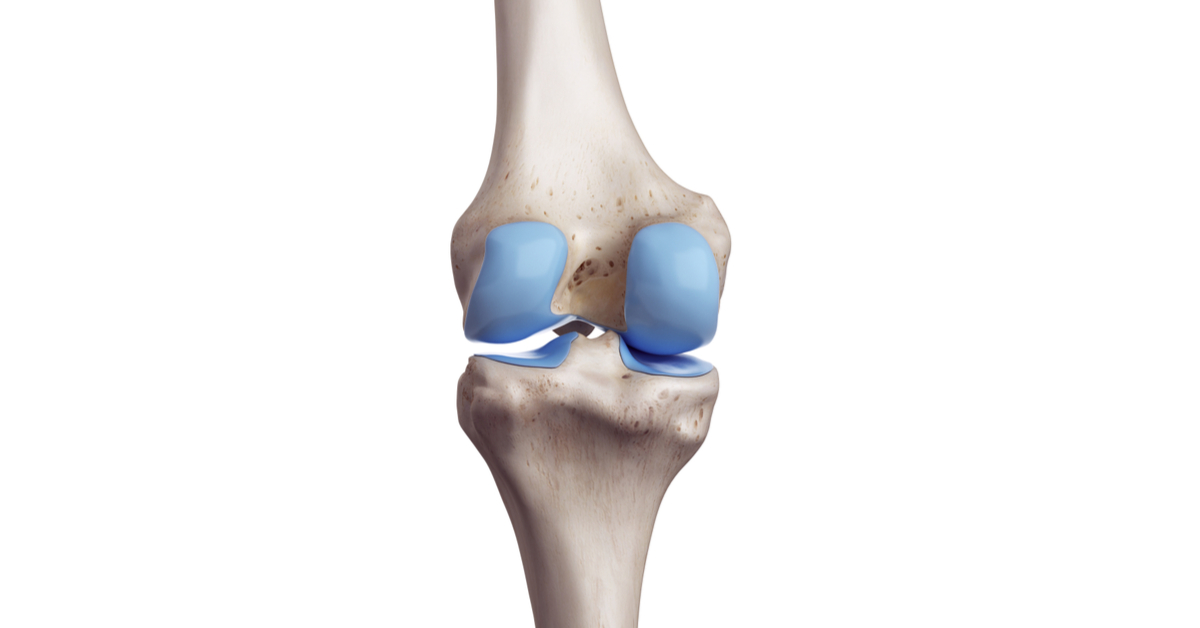What is Lumbar Disc Herniation? What are its Symptoms and Treatment?
What is the lumbar disc?
The lumbar disc is a type of slip that occurs in the lumbar vertebrae and is a common condition that affects middle-aged individuals. A lumbar disc herniation occurs when the lumbar cartilage, located between the vertebrae and responsible for absorbing shocks and distributing pressure on the spine, becomes damaged.
There are multiple and diverse causes of lumbar disc herniation. The herniation may be due to aging and natural degeneration of the lumbar cartilage. Lumbar disc herniation may also be caused by excessive physical activities or repetitive movements that place a lot of pressure on the lumbar vertebrae. Genetic factors may also play a role in the occurrence of lumbar disc herniation.
Common symptoms of lumbar disc herniation include pain that extends from the buttocks to the leg and foot, resulting from pressure on the sciatic nerve. The pain may be accompanied by a feeling of numbness or tingling in the leg or foot. The pain may increase while sitting for long periods or when performing certain movements such as kneeling or bending. The patient may feel weakness in the affected leg and difficulty in moving it normally.
The treatment of lumbar disc herniation depends on the severity of the symptoms and their impact on the patient’s life. In the case of mild to moderate symptoms, lumbar disc herniation can be treated with physical therapy and exercises that strengthen the muscles surrounding the spine. Temporary use of pain relief medications can help alleviate temporary symptoms.
In cases of severe and persistent symptoms, surgical treatment may be required to repair the lumbar disc herniation. In this case, the damaged part of the lumbar cartilage is removed, and the affected vertebrae are secured. Surgical treatment is considered a last resort and is only taken if the patient does not respond to other treatments and if the severe symptoms significantly impact their daily life.
Overall, patients with lumbar disc herniation should adopt a healthy lifestyle and avoid excessive physical activities that may increase the pressure on the lumbar vertebrae. It is advisable to maintain a healthy weight and engage in appropriate exercises to strengthen the muscles and improve the flexibility of the spine.
In summary, lumbar disc herniation is a common condition that affects the lumbar vertebrae and causes symptoms such as pain and numbness in the leg. Lumbar disc herniation is treated with physical therapy and exercises or surgical treatment in cases of severe symptoms. Patients should follow a healthy lifestyle and avoid excessive physical activities to prevent lumbar disc herniation.
Is there a treatment for lumbar disc herniation?
Lumbar disc herniation is a condition that occurs when the lumbar disc, which is located between the vertebrae in the spine, moves out of its usual position. Lumbar disc herniation is one of the most common spinal injuries and causes a lot of pain and discomfort for patients.
The main factors causing lumbar disc herniation are as follows:
Aging: Aging is one of the main factors that increase the likelihood of a disc herniation. Over time, the lumbar disc deteriorates and loses its elasticity and resilience, which increases the possibility of herniation. Stress and severe strain: Engaging in activities that require lifting or pulling heavy objects, excessive jumping, or bending can damage the lumbar disc and increase the likelihood of herniation. Injuries and trauma: The spine may suffer direct injuries or trauma, such as car accidents or severe falls, which can cause disc herniation.
When lumbar disc herniation occurs, it can cause sharp pain in the back, leg, hip, and buttocks. The pain may be accompanied by muscle weakness and difficulty in movement, and a lack of control over urination and bowel movements. Therefore, it is necessary for the patient to visit a doctor to diagnose the condition and determine the appropriate treatment.
Treatment methods for lumbar disc herniation depend on the severity of the case and its impact on the nerves. In cases of mild to moderate herniation, physical therapy and rehabilitative exercises can be used to strengthen the muscles and increase the flexibility of the spine. Pain relievers and anti-inflammatory medications can also be used to alleviate pain and swelling.
In cases of severe disc herniation that causes muscle weakness and difficulty in movement, surgical treatment may be necessary. In such cases, surgery is performed to remove the damaged part of the disc and stabilize the adjacent vertebrae to ensure stability.
In addition to traditional medical treatment, some preventive tips can be followed to reduce the likelihood of disc herniation. It is advisable to avoid violent sports practices and improper sitting for long periods. It is very important to maintain a healthy weight and exercise regularly to strengthen the muscles and improve spinal flexibility.
In conclusion, the diagnosis and treatment of lumbar disc herniation should be under the supervision of a specialized doctor. Treatment may take some time and patience, but with the appropriate treatment and following medical guidelines, patients can feel improvement and pain relief.
Is lumbar disc herniation dangerous?
Lumbar disc herniation is a common condition that affects the spine and causes pain and numbness in the back and leg. Is this condition dangerous? Let’s take a look at this topic.
Although lumbar disc herniation can be painful and uncomfortable, it is not usually considered significantly dangerous. In most cases, it can be treated with conservative treatments such as rest, physical therapy, and pain-relieving medications.
However, in some rare cases, lumbar disc herniation may be more serious. For example, if there is severe pressure on the nerves in the spine, weakness or numbness may occur in the leg or foot. This type of case may require surgical intervention to relieve pressure on the nerves and restore their normal function.
Also, it is important to mention that lumbar disc herniation may increase the risk of developing other spine problems over time. The continuous wear and tear on the vertebrae adjacent to the herniated disc can lead to additional deterioration and narrowing of the spinal canal, which can result in pressure on the nerves and exacerbation of symptoms. Therefore, although lumbar disc herniation may not be severe initially, it is essential to monitor and treat it properly to avoid worsening the condition and the emergence of other problems in the future.
Additionally, it should be noted that lumbar disc herniation is not a condition that improves quickly. Healing and the restoration of normal functions can take some time and effort. Patients may need to commit to an intensive physical therapy program and regular medical follow-up to achieve better results.
In conclusion, we can say that lumbar disc herniation is not necessarily a serious condition, but it requires necessary treatment and care. Patients should consult with specialist doctors about their health condition to obtain the correct diagnosis and appropriate treatment.
What are the symptoms of lumbar disc herniation?
Lumbar disc herniation is a common condition that affects middle-aged individuals and is one of the causes of pain in the back and leg area. Lumbar herniation occurs when the gelatinous cartilage surrounding the discs between the vertebrae tears, leading to its pressure on and irritation of the surrounding nerves, causing pain and associated symptoms.
The symptoms of lumbar disc herniation are varied and include the following:
Sciatica: This is severe pain that extends from the buttocks to the back of the knee in one leg. This pain occurs as a result of the lumbar discs pressing on the sciatic nerve. Numbness and tingling in the leg or foot: The affected person may feel numbness or tingling in the leg or foot due to the irritation of the nerves surrounding the herniated discs. Pain in the lower back, buttocks, and lower leg: Lumbar herniation can be accompanied by pain in the lower back, buttocks, and lower leg, due to irritation of the nerve roots.
The causes of lumbar herniation depend on the damage to the lumbar discs and include the following factors:
Lifting heavy objects with twisting of the back. Exposure to traumatic impacts on the lower back. Gender, as males are more prone to lumbar herniation. Frequent driving of vehicles and sitting for long periods. Vibrations from the car engine and road factors.
Lumbar herniation treatment methods include:
The initial treatment focuses on pain relief, including bed rest for two days if possible, and avoiding sitting for long periods. Adjusting physical activity and avoiding movements that increase the severity of the pain. Performing some exercises under the guidance of a physical therapist to relieve pressure on the nerve roots. If symptoms do not improve after a period of initial treatment, surgical treatment may be considered.
Those with lumbar herniation should consult a specialist to evaluate their condition and determine the appropriate treatment, as the treatment can vary depending on the severity of the symptoms and their impact on the patient’s life.
Does lumbar disc herniation cause paralysis?
Lumbar disc herniation is a condition that affects the spinal column in the neck area, causing the lumbar intervertebral disc, which separates the vertebrae from each other, to slip. Lumbar disc herniation is a serious and painful condition, and some may wonder if it can cause paralysis. In this article, we will address this topic and provide the necessary information.
First, we must understand that lumbar disc herniation can lead to pressure on the nerves present in the spinal column, which can cause sharp pain and numbness in the arms and legs. However, paralysis as a result of lumbar disc herniation is a very rare condition.
When lumbar disc herniation occurs, the lumbar disc slips and may press on the adjacent nerves, which can cause sharp pain and numbness in the limbs. If the pressure on the nerves is very severe, it may lead to muscle weakness and loss of normal movement. In very rare cases, permanent nerve damage can occur, which in some severe cases can lead to paralysis.
However, we must note that paralysis as a result of lumbar disc herniation is very rare and occurs in severe and advanced cases. In most cases, lumbar disc herniation can be treated with physical therapy, pain relief medications, and appropriate exercise. In severe cases, surgery may be required to relieve pressure on the nerves.
To prevent lumbar disc herniation and reduce the chance of paralysis, some preventive measures can be taken. These measures include maintaining correct posture while sitting and standing, avoiding lifting heavy weights, and practicing appropriate exercises to strengthen the back and abdominal muscles.
In summary, we can say that lumbar disc herniation may cause sharp pain and numbness in the limbs, and in very rare cases may lead to paralysis. However, paralysis as a result of lumbar disc herniation is a very rare and unusual condition. It is necessary to consult a specialist doctor to evaluate each individual’s condition and determine the appropriate treatment.
How should a patient with a disc herniation sleep?
Proper sleep is important for patients with cervical disc herniation, as it contributes to reducing pain and improving the quality of life. There are several positions that patients can adopt to get comfortable and suitable sleep. In this article, we will review some beneficial positions for patients with cervical disc herniation.
Sleeping on the back with a pillow under the knees: This position requires lying on the back with a pillow under the head and extending the feet forward with another pillow under the knees. This position helps to reduce the bending of the spine, which aids in creating spaces between the back vertebrae. This position is suitable for people who suffer from mild back pain.
Sleeping on one side: Sleeping on one side of the body is one of the preferred positions for patients with cervical disc herniation. It is important to switch sides regularly to balance the muscles on both sides. It is also advised to place a pillow in the gap under the neck to provide necessary support.
Sleeping on the stomach with the pillow under it: This position is less common but can be beneficial for some patients. One must lie on the stomach with the pillow under the head and the face turned to one side. It is also advisable to place a thin pillow in the upper chest area and another pillow under the lower abdomen. This position helps to relieve any pressure between the vertebrae.
In addition to the positions mentioned above, patients should follow some other tips to achieve comfortable and healthy sleep, such as:
- Using a comfortable pillow that is suitable for the neck and head.
- Avoiding the use of a pillow that is too high or too low.
- Avoiding sleeping on hard or uncomfortable surfaces.
- Performing exercises to strengthen the core muscles and improve body flexibility.
- Maintaining a correct posture for the body while sitting, standing, and walking.
Patients should consult their treating physician before following any position or advice, as the doctor can provide specific tips and directions based on the patient’s condition and its developments.
By using these appropriate positions and following the correct advice, patients with cervical disc herniation can enjoy comfortable sleep and improve their quality of life.
Is lumbar spondylitis serious?
Lumbar spondylitis is a medical condition that affects the vertebrae located in the lower back area, which consists of five vertebrae. This inflammation causes severe pain and muscle spasms around the vertebrae, affecting the person’s movement and causing a lot of discomfort and stress.
Indeed, lumbar spondylitis is considered a serious condition and should be treated properly to avoid worsening symptoms and problem progression. If ignored or not treated appropriately, it could lead to serious complications and negative impacts on a person’s health.
Possible symptoms of lumbar spondylitis include feeling a sting in the lower back and unbearable pain in the joint and knee area. A person may feel pain when moving after sitting for a long time. These symptoms can worsen over time if the proper therapeutic intervention is not applied.
It is worth noting that the treatment of lumbar spondylitis requires several methods, and must be supervised by a specialist doctor. Among the treatment methods used, thermal frequency treatment can be mentioned for pain relief and muscle spasms. This treatment is characterized by not requiring surgical intervention and is considered completely safe.
Lumbar spondylitis can also be treated by aligning the affected vertebrae. This is done through physical therapy and treatment sessions conducted by the treating physician. This treatment helps improve the condition of the vertebrae and strengthen the surrounding muscles.
In addition, some preventive measures can be followed to reduce lumbar spondylitis. These include avoiding standing for long periods and ensuring to stand in the correct posture. It is also advisable to have complete bed rest and not to exert effort affecting the back vertebrae.
A balanced diet and weight reduction in case of obesity are also important preventive measures to reduce lumbar spondylitis. Anti-inflammatory ointments and pain relievers prescribed by the doctor can also be used to alleviate the pain.
In general, individuals who suffer from symptoms of lumbar spondylitis should adhere to the appropriate treatment and follow preventive guidelines to avoid aggravating the problem. A person should visit a specialist and consult them to determine the appropriate treatment and follow the necessary instructions for recovery.
Overall, it can be said that lumbar spondylitis should not be taken lightly. If diagnosed and treated correctly, a person can lead a normal and healthy life without negative effects on their health. However, treatment must be immediate and according to the directions of specialized doctors to avoid the problem worsening and developing into more serious stages.
Can you live with back disc herniation?
Back disc herniation is a common condition that many people suffer from. Although it is an annoying and painful condition, it is possible to coexist with it in the long term. In this article, we will discuss the possibility of living with back disc herniation and the measures that can be taken to alleviate pain and improve quality of life.
First, it is necessary to continue with physical therapy as prescribed by a doctor. Physical therapy is one of the essential elements in managing disc herniation cases, as it helps to strengthen the muscles of the back, arms, and legs to withstand physical activity without overloading the spine and discs.
Secondly, it is advisable to follow proper sleeping and sitting postures that reduce pressure on the spine and discs. It is preferable to sleep on your back with one or two pillows under your knees to achieve the most comfortable position and relieve pressure on the back. In the case of sitting, it is advisable to use a pillow to support the back area and maintain a correct posture for the spine.
Thirdly, practices that increase the pressure on the spinal column and negatively affect the condition of disc herniation should be avoided. Things to avoid include heavy lifting, excessive bending of the back, and sitting for long periods without changing the sitting position.
Fourthly, it is recommended to strengthen the muscles of the body in general to improve the stability of the spine and reduce the chances of disc herniation. Muscle-strengthening exercises such as swimming, walking, and exercises to strengthen the back and abdominal muscles can be done.
Fifthly, attention should be paid to factors that may increase pain and cause muscle spasms. Cold is one of these factors, as it increases muscle contractions and thus increases pain. Therefore, it is advisable to keep the back well warmed in winter and to wear woolen clothes that provide warmth and reduce muscle spasms and pain.
In conclusion, we must remember that coexisting with back disc herniation requires commitment to physical therapy and following the advice mentioned above. It is also important to consult a specialist doctor in case of worsening symptoms or persistent pain. Our commitment to self-care and proper treatment will help us live with disc herniation and improve our quality of life.
What are the prohibited exercises for disc herniation?
Disc herniation is a common condition that affects the spinal column, causing severe pain and reducing the mobility of the affected person. To deal with this condition, doctors recommend practicing certain physical exercises that help strengthen the muscles surrounding the spine and alleviate pain. However, there are some exercises that should be avoided for patients with disc herniation, as they can worsen symptoms and cause further injuries. In this article, we will learn about the exercises that should be avoided for patients with disc herniation.
Jumping and Intense Running: Jumping and intense running are exercises that should be avoided by patients with disc herniation. These exercises can increase pressure on the spine and cause further damage to the disc. Instead, it is preferable to practice swimming or cycling as alternatives to jumping and intense running.
Heavy Weight Lifting: Patients with disc herniation are advised to avoid lifting heavy weights, as this can increase pressure on the spine and worsen symptoms. If you wish to practice weight lifting exercises, the weights should be light and done under the supervision of a physical therapy specialist.
Overstretching the Back: Patients with disc herniation are advised to avoid overstretches of the back, as this can increase pressure on the disc and worsen symptoms. It is preferable to practice targeted and monitored stretching exercises under the guidance of a physical therapy specialist to avoid overstretching.
Exercises that Require Severe Forward Bending: Exercises requiring severe forward bending, such as lifting weights from the ground in an incorrect position, should be avoided. This movement can lead to increased pressure on the disc and worsen symptoms.
Exercises that Require Severe Lateral Bending: Patients with disc herniation are advised to avoid exercises that require severe lateral bending, as these movements can increase pressure on the disc and cause symptom exacerbation. It is preferable to practice monitored lateral stretching exercises under the guidance of a physical therapy specialist.
Ultimately, exercises for patients with disc herniation should be performed with caution and under the supervision of a physical therapy specialist. Exercises that are prohibited and may lead to exacerbation of symptoms and further injury should be avoided. It is essential to consult a specialist before starting any exercise program to ensure that it is suitable for the patient’s condition and does not cause harm.
What is the best treatment for a disc herniation in the back?
Treatment of disc herniation in the back is a subject of interest for many individuals who suffer from back pain, which can be annoying and painful. Disc herniation is a common condition that affects people of all ages and can impact the overall quality of life.
The treatment methods for disc herniation in the back depend on the degree of injury and the patient’s condition. Treatment can include various options, ranging from self-care measures and lifestyle changes to medical therapy and surgery in severe cases.
One of the common treatments for disc herniation in the back is rest and self-care measures. Patients are advised to avoid activities that increase pain and put pressure on the spine, such as sitting for long periods or lifting heavy weights. Supportive pillows and suitable mattresses can also be used to relieve pressure on the spine during sleep.
Natural treatments and physical exercises are also an effective option for treating herniated discs in the back. Exercises targeting the strengthening of the muscles around the spine can help improve stability and balance and reduce pain. It is recommended to focus on exercises that strengthen the abdominal, back, buttocks, and thigh muscles.
In addition, drug therapy can be used to relieve the pain and swelling associated with a herniated disc in the back. Physicians can prescribe pain relievers and non-steroidal anti-inflammatory drugs to patients to alleviate symptoms. A doctor should be consulted before taking any medication to ensure the correct dosage and avoid any potential interactions.
If previous treatments do not respond, doctors may advise surgical treatment for a herniated disc in the back. Surgical treatment involves removing the damaged cartilage or repairing the herniated disc through surgery. Surgery is considered a last resort and needs a thorough evaluation by a physician.
In general, patients should consult a specialist to assess their condition and determine the most appropriate treatment. Treatment may require multiple sessions and regular follow-up to achieve the desired results. The goal of treatment is to alleviate pain and improve movement and daily functions for the patient.
Do not forget that prevention and maintaining a healthy lifestyle are essential in avoiding a herniated disc in the back. Individuals should maintain good posture while sitting and standing, avoid sitting for long periods without movement, and regularly perform physical exercises to strengthen muscles and improve flexibility.
In summary, treating a herniated disc in the back is multifaceted and may require trying several options before achieving the desired results. Patients must follow the doctor’s instructions and maintain continuous communication with them to ensure the best treatment outcomes.
Does massage benefit a herniated disc?
Massage is a technique used by many people to achieve relaxation and relief, but can it have benefits in treating a herniated disc? In this article, we will explore the benefits of massage in treating a herniated disc and whether it can be an effective way to relieve pain and improve the overall condition of patients.
A herniated disc is a common condition that many people suffer from, occurring when the gel-like cartilage between the vertebrae in the spine slips out. This can lead to several disturbing symptoms such as numbness, weakness, stiffness, and limited movement. Patients may have difficulty performing daily activities due to pain and muscle stiffness, which can affect their sleep quality and cause feelings of anxiety and stress.
There are many different treatment options for a herniated disc, including physical therapy and massage sessions. When massage is performed on the tissues and muscles surrounding the area of the herniated disc, it can have a positive effect on the overall condition of the patients.
One of the main benefits of massage in treating a herniated disc is increasing blood flow to the affected area. By improving blood flow, oxygen and nutrients can reach the damaged tissues better and help with cell regeneration and healing. Additionally, massage can increase muscle flexibility and improve the range of motion, which helps alleviate pain and improve the ability to perform daily movements better.
According to a composite study of several studies, massage can be an alternative and effective treatment for herniated discs. Massage may help reduce pain and improve the overall condition of patients and may be a good option for those looking for natural and non-surgical ways to alleviate symptoms.
Nevertheless, it is essential to consult a doctor before starting massage sessions as a treatment for disc herniation. There may be specific conditions that warrant avoiding massage or require particular massage techniques. The doctor should assess the patient’s condition and determine whether massage is appropriate and safe for them.
In short, massage can be effective in treating disc herniation by improving blood flow and muscle flexibility. However, consulting a doctor before starting massage sessions is crucial to ensure that they are suitable and safe for the patient’s condition. Physical therapy and massage may be part of the comprehensive treatment plan for disc herniation, but the treatment should be directed according to the individual needs of each patient.
Best Doctor for Endoscopic Disc Herniation Surgery
Dr. Amr Amal is a consultant orthopedic surgeon specializing in endoscopic treatment of disc herniation in Egypt. He treats many spine-related issues, such as degenerative disorders, spinal stenosis, spinal twists, and compression of the spinal cord and nerve roots. Dr. Amr uses various therapeutic methods like medication, local injections, and endoscopic surgery to treat joint roughness and pain.
Endoscopic disc herniation surgery is one of the surgical procedures used to treat disc herniation and is one of the most important and famous treatments in this regard. Disc herniation is a common and very painful disease, which can negatively affect people’s lives and hinder them from performing daily activities normally. Therefore, endoscopic disc herniation surgery is an effective option to relieve the pain of disc herniation and improve the patient’s condition.
The goal of endoscopic disc decompression surgery is to alleviate pain and improve the condition of patients suffering from disc herniation. The procedure is carried out by inserting a small, flexible tool under the skin and through tiny holes in the back area. Through this tool, a part of the damaged disc is removed or suctioned out safely and precisely. Dr. Amr Amal is one of the best doctors specialized in this type of surgery, with high expertise and efficiency in performing endoscopic disc herniation operations.
As for the cost of endoscopic disc decompression surgery in Egypt, it can vary depending on several factors such as the complexity level of the case, the location of the operation, and the hospital costs. Therefore, it is preferred to contact Dr. Amr Amal’s clinic at Dar Al Fouad Medical for inquiries about the cost of the procedure and more details related to the process.
It is critically important to contact a specialist doctor in this procedure to get the necessary advice and information about the process, treatment duration, and post-operative care required. Dr. Amr Amal can provide the necessary counsel and guidance to patients and offer appropriate treatment according to their health condition and specific requirements.
By choosing Dr. Amr Amal for endoscopic disc herniation surgery, patients can rest assured that they are in trustworthy and specialized hands and that they will receive the best medical care and satisfactory results. Dr. Amr is known for his skill and precision in surgical procedures and for providing personalized care to each patient.
Thus, if you are looking for the best doctor for endoscopic disc herniation surgery in Egypt, Dr. Amr Amal is an excellent choice. You can contact him at his clinic in Dar Al Fouad Medical on the fourth floor, number 418, for more information and to schedule an appointment for medical consultation and the necessary examination.
